Think You Know the Ramayana? 10 Proofs Ram Never Exiled Sita & Agnipariksha Wasn’t Real
Riya Kumari | Jan 09, 2025, 20:05 IST
Ramayana
The story of Lord Rama and Sita is told in different ways in various texts. In the original Valmiki Ramayana, there is no mention of Rama exiling Sita. However, in later versions of the Ramayana, there are four different accounts where Sita’s exile is mentioned. These versions appear in texts like the Uttar Kanda, the Srimad Bhagavata Purana, the Adhyatma Ramayana, and the Padma Purana. The confusion arises because some people accept these later versions, while others stick to the original story where Rama and Sita remain together.
Lord Shri Rama never exiled Mother Sita. The story of his abandoning her is a later addition, added to the Ramayana during the Gupta period, and it doesn’t appear in the original Valmiki Ramayana. In fact, the original Ramayana ends on a positive note, with Rama and Sita ruling their kingdom together for many years. According to the sacred laws of dharma, a man is never allowed to abandon his wife—no matter the circumstances. Lord Rama, who lived by these laws, would never have violated them. Scriptures like Vasistha 28:1–2 clearly state that a woman must never be forsaken, no matter the situation. This false story of Rama’s exile of Sita is not found in other versions of the Ramayana, like in the Mahabharata, either. So, the real question is: If Rama never exiled Sita, then how could there be any debate about whether it was right or wrong.
1. The Later Addition

The story of Sita’s exile is not found in the Valmiki Ramayana but appears in later texts, including:
Uttar Kanda (an addition to the Ramayana): Rama’s decision to exile Sita due to public gossip.
Srimad Bhagavata Purana: The exile is framed as part of a divine plan to end Rama's incarnation.
Adhyatma Ramayana: Similar to the Bhagavata Purana, this text also suggests the exile was part of a divine scheme.
Padma Purana: This version introduces a curse placed on Sita by a parrot, which leads to her exile.
2. Uttar Kanda
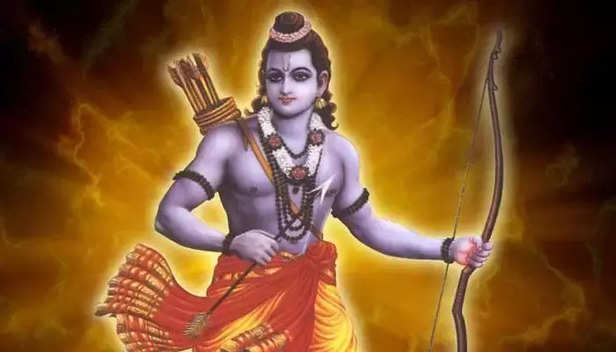
The Uttar Kanda portrays the incident as an unfortunate yet necessary decision in the eyes of Rama, not because of doubt in Sita’s purity, but because he could not disregard public opinion and the necessity of upholding his dharma as a ruler. The idea that Lord Rama abandoned Sita due to public gossip is not part of the original Ramayana. In the authentic story, Sita stayed with Rama as his queen in Ayodhya. The claim of her exile comes from a later addition, not the original text. Some Guruparamparas suggest that Sita did raise her sons, Lava and Kusha, in Valmiki’s Ashram, but this was for their spiritual development, not because she was exiled. Valmiki’s Ashram was close to Ayodhya, only a day or two’s walk away, indicating that it wasn’t an exile in the traditional sense, but a decision aimed at nurturing their children.
3. Srimad Bhagavata Purana
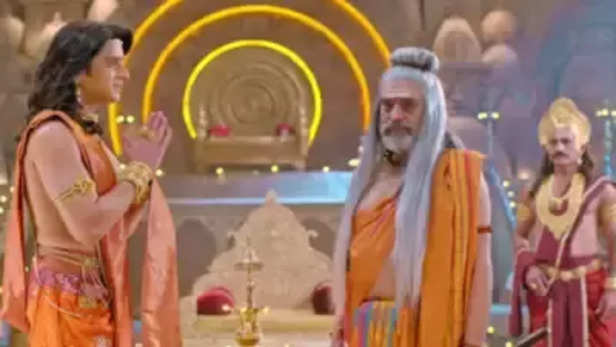
In the Srimad Bhagavata Purana, Rama's decision to send Sita away stems from his deep sense of duty as a king. Overhearing the unjust criticisms of the people about Sita’s character, he is compelled to act in a way that protects his kingdom's honor and the reputation of his family. Rama’s action is not out of doubt about Sita's purity but a response to societal ignorance and the weight of leadership, reflecting his sacrifice for the greater good rather than any personal failure.
4. Adhyatma Ramayana
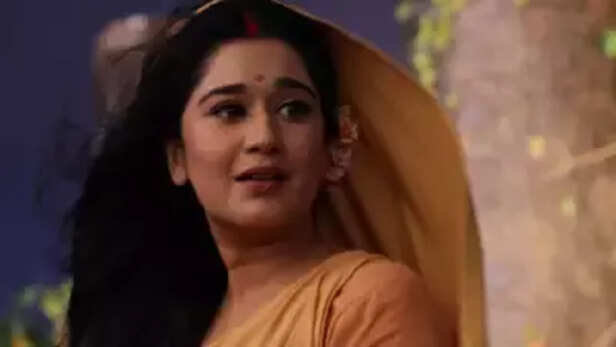
Sita’s role in the divine plan, suggesting that she too knew her fate. In the Adhyatma Ramayana, Rama's decision to exile Sita is revealed as part of a divine plan to end his incarnation. Sita tells Rama that the gods came to her and asked Rama to end his time on earth. She agrees to go into exile and live in the forest, understanding that this is part of their destiny. Rama, in turn, has a plan to make it happen: he will send Sita to prove her chastity and, after some years, she will return to Ayodhya to demonstrate her purity before all. Eventually, Sita will return to the earth's depths and ascend to Vaikunta, symbolizing the divine purpose of their actions and the end of Rama’s earthly journey.
5. Padma Purana

In the Padma Purana, a unique and poignant story unfolds around a curse placed on Sita by a parrot. The parrot, whose wife was distressed by Sita's actions, curses her by saying that just as she is causing the separation between the parrot and her husband, she too will be separated from Rama. This curse comes to fruition when the parrot is reborn as a washerman, named Krodhana. The washerman's words about Sita cause her to be rejected by Rama, leading to her exile. This divine plan, shaped by the curse, ultimately results in Sita's time in the forest, fulfilling a significant part of her journey.
5. Ramcharitmanas
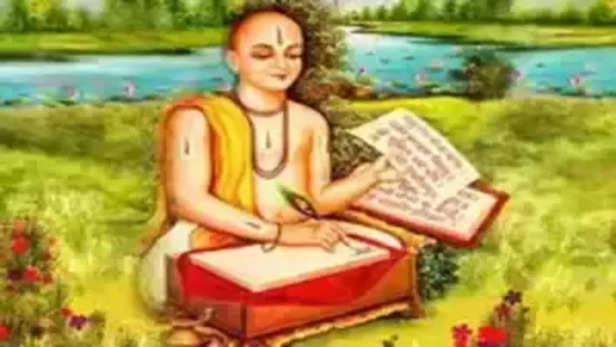
In the Ramcharitmanas by Tulsidas, before Sita's abduction, Lord Rama created a "Maya Sita" (an illusion of Sita) to protect the real Sita, who was placed under the divine protection of Agni Deva (the Fire God). The Agnipariksha, then, was not just a test of Sita’s purity, but a divine act to bring the original Sita back from Agni Deva. The Maya Sita entered the fire, and Agni Deva emerged with the real Sita, handing her back to Rama. Tulsidas, recognizing Lord Rama as the supreme divine being (Par Brahm), provides an explanation for the incident that aligns with his view of Rama’s divinity. The episode is presented as a cosmic event, hidden from the knowledge of even the gods, Siddhas, and sages, showcasing the divine nature of Rama’s actions.
6. Sage Bhrigu’s Curse
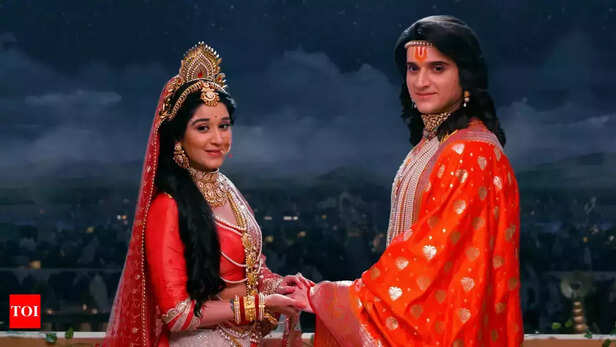
A lesser-known explanation is tied to a curse from Sage Bhrigu. Lord Vishnu had killed the sage’s wife during a battle between the gods and demons. In anger, Bhrigu cursed Vishnu to suffer the pangs of separation from his wife repeatedly. As a result, Rama and Sita, in their human incarnations, endured separation multiple times to honor this curse. The recurring theme of the Ramayana is separation and suffering, symbolizing the human experience of pain. Rama and Sita, as incarnations of Vishnu and Lakshmi, took on human lives full of suffering to demonstrate the human struggle and to inspire others to endure their own trials with dignity and dharma.
7. The Golden Statue of Sita
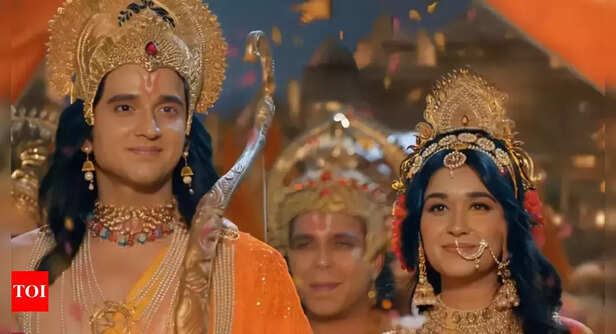
In the most poignant moment of Rama’s reign, during the Ashvamedha Yagna, he placed a golden statue of Sita in the kingdom, a powerful symbol of his unwavering belief in her purity and character. The choice of gold, impervious to tarnish, was a profound statement: just as gold remains untarnished by time, Sita’s virtue could never be stained by the false accusations and gossip of society. Rama’s act was not just a public defense; it was a deeply personal affirmation of his love for Sita, a love that transcended the cruel judgment of the world. He placed the statue not as a substitute for Sita, but as a declaration that her worth, her honor, and her dignity would never be diminished by the unjust whispers of others.
8. Rama’s Compassion for Wronged Women
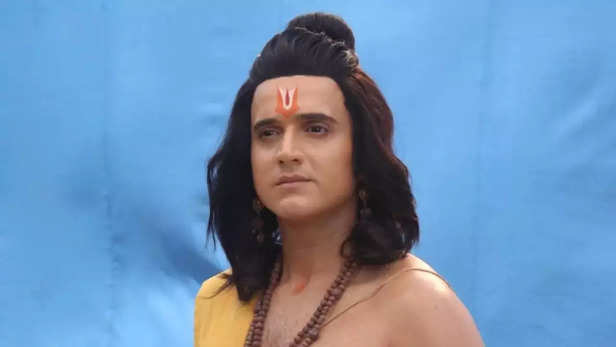
When Ahalya was wrongly ostracized due to the lustful actions of Sage Gautama, Rama rehabilitated her, bringing her back into society with dignity. Similarly, he reached out to Shabri, a tribal woman cast aside by society, and honored her for her devotion. Rama also supported Tara, the queen of Kishkindha, elevating her son Angada to a rightful position of power, despite the political complexities of her past. After Ravana’s death, he showed great compassion to Mandodari, acknowledging her suffering as the wife of a lustful king and treating her with the respect she deserved. Rama's actions consistently showed that he stood by women who were wronged, never doubting their character or purity. If he had the strength and conviction to defend and uplift these women, it stands to reason that his decision to send Sita into exile was not a reflection of any doubts about her, but rather a tragic necessity shaped by his duty as a ruler in the face of public opinion.

The concept of Rama Rajya, while often seen as a utopian ideal, reveals the immense pressure placed on a ruler to be flawless, to be beyond reproach at all times. In a society that expected perfection from its leader, Rama bore the weight of these expectations, which ultimately led him to make painful sacrifices. His reign was one of righteousness, but the very idealization of his rule left little room for him to show vulnerability or to prioritize his own family’s happiness over the demands of the public. Despite his unwavering love and belief in Sita’s purity, the relentless pressure of public opinion forced him to make a heart-wrenching decision for the greater good of the kingdom. It was not a reflection of any flaw in his character, but rather the harsh reality of being a leader in a world where perfection was demanded, and the leader’s personal choices were often secondary to the will of the people.
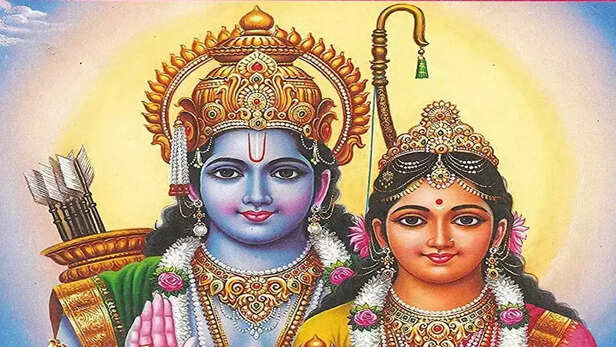
Valmiki Ramayana, Yuddha Kanda, 118.17
"नाहं जानामि वैदेहीं मनसापि कृतालयाम् |
रावणेन प्रमथितां न हि तां स्प्रष्टुमर्हति ||"
Interpretation:
Rama affirms that he never doubted Sita’s purity. He believes Ravana couldn’t violate her because of her divine protection and inner strength.
Valmiki Ramayana, Yuddha Kanda, 118.18
"लोकानां साक्षिकामर्थे मया चेदं प्रवर्तितम् |
न हि मे परितोषोऽयं यथा लोकस्य साक्षिकः ||"
Interpretation:
Rama explains that the trial by fire was not out of personal suspicion but to clear doubts in the eyes of the world and ensure Sita’s dignity was preserved publicly.
Valmiki Ramayana, Aranya Kanda, 3.10.21
सधर्म चारिणी मे त्वम् प्राणेभ्यो अपि गरीयसी ॥
Interpreted Translation:
"You, Sita, my partner in Dharma, are dearer to me than my very life itself. Your presence gives my existence meaning."
Valmiki Ramayana, Ayodhya Kanda, 2.30.27
न देवि तव दुह्खेन स्वर्गम् अपि अभिरोचये ।
न हि मे अस्ति भयम् किंचित् स्वयम्भोर् इव सर्वतः ॥
Interpreted Translation:
"My beloved Sita, I cannot even imagine enjoying the heavens if you are in pain. I fear nothing—not even death itself—but the thought of your suffering is unbearable to me."
Valmiki Ramayana, Yuddha Kanda, 6.5.6
वाहि वात यतः कन्या ताम् स्पृष्ट्वा माम् अपि स्पृश ।
त्वयि मे गात्र संस्पर्शः चन्द्रे दृष्टि समागमः ॥
Interpreted Translation:
"Oh gentle wind, blow past my beloved Sita and then touch me, carrying with you the essence of her presence. Through your breeze, I feel her tender touch, and through the moonlight, I sense the gaze of her beautiful eyes."
1. The Later Addition

Vanvas
The story of Sita’s exile is not found in the Valmiki Ramayana but appears in later texts, including:
Uttar Kanda (an addition to the Ramayana): Rama’s decision to exile Sita due to public gossip.
Srimad Bhagavata Purana: The exile is framed as part of a divine plan to end Rama's incarnation.
Adhyatma Ramayana: Similar to the Bhagavata Purana, this text also suggests the exile was part of a divine scheme.
Padma Purana: This version introduces a curse placed on Sita by a parrot, which leads to her exile.
2. Uttar Kanda

Ram
The Uttar Kanda portrays the incident as an unfortunate yet necessary decision in the eyes of Rama, not because of doubt in Sita’s purity, but because he could not disregard public opinion and the necessity of upholding his dharma as a ruler. The idea that Lord Rama abandoned Sita due to public gossip is not part of the original Ramayana. In the authentic story, Sita stayed with Rama as his queen in Ayodhya. The claim of her exile comes from a later addition, not the original text. Some Guruparamparas suggest that Sita did raise her sons, Lava and Kusha, in Valmiki’s Ashram, but this was for their spiritual development, not because she was exiled. Valmiki’s Ashram was close to Ayodhya, only a day or two’s walk away, indicating that it wasn’t an exile in the traditional sense, but a decision aimed at nurturing their children.
3. Srimad Bhagavata Purana

Rama
In the Srimad Bhagavata Purana, Rama's decision to send Sita away stems from his deep sense of duty as a king. Overhearing the unjust criticisms of the people about Sita’s character, he is compelled to act in a way that protects his kingdom's honor and the reputation of his family. Rama’s action is not out of doubt about Sita's purity but a response to societal ignorance and the weight of leadership, reflecting his sacrifice for the greater good rather than any personal failure.
4. Adhyatma Ramayana

Sita
Sita’s role in the divine plan, suggesting that she too knew her fate. In the Adhyatma Ramayana, Rama's decision to exile Sita is revealed as part of a divine plan to end his incarnation. Sita tells Rama that the gods came to her and asked Rama to end his time on earth. She agrees to go into exile and live in the forest, understanding that this is part of their destiny. Rama, in turn, has a plan to make it happen: he will send Sita to prove her chastity and, after some years, she will return to Ayodhya to demonstrate her purity before all. Eventually, Sita will return to the earth's depths and ascend to Vaikunta, symbolizing the divine purpose of their actions and the end of Rama’s earthly journey.
5. Padma Purana

Parrot
In the Padma Purana, a unique and poignant story unfolds around a curse placed on Sita by a parrot. The parrot, whose wife was distressed by Sita's actions, curses her by saying that just as she is causing the separation between the parrot and her husband, she too will be separated from Rama. This curse comes to fruition when the parrot is reborn as a washerman, named Krodhana. The washerman's words about Sita cause her to be rejected by Rama, leading to her exile. This divine plan, shaped by the curse, ultimately results in Sita's time in the forest, fulfilling a significant part of her journey.
5. Ramcharitmanas

Tulsidas
In the Ramcharitmanas by Tulsidas, before Sita's abduction, Lord Rama created a "Maya Sita" (an illusion of Sita) to protect the real Sita, who was placed under the divine protection of Agni Deva (the Fire God). The Agnipariksha, then, was not just a test of Sita’s purity, but a divine act to bring the original Sita back from Agni Deva. The Maya Sita entered the fire, and Agni Deva emerged with the real Sita, handing her back to Rama. Tulsidas, recognizing Lord Rama as the supreme divine being (Par Brahm), provides an explanation for the incident that aligns with his view of Rama’s divinity. The episode is presented as a cosmic event, hidden from the knowledge of even the gods, Siddhas, and sages, showcasing the divine nature of Rama’s actions.
6. Sage Bhrigu’s Curse

Ram and Sita
A lesser-known explanation is tied to a curse from Sage Bhrigu. Lord Vishnu had killed the sage’s wife during a battle between the gods and demons. In anger, Bhrigu cursed Vishnu to suffer the pangs of separation from his wife repeatedly. As a result, Rama and Sita, in their human incarnations, endured separation multiple times to honor this curse. The recurring theme of the Ramayana is separation and suffering, symbolizing the human experience of pain. Rama and Sita, as incarnations of Vishnu and Lakshmi, took on human lives full of suffering to demonstrate the human struggle and to inspire others to endure their own trials with dignity and dharma.
7. The Golden Statue of Sita

Ramayanaa
In the most poignant moment of Rama’s reign, during the Ashvamedha Yagna, he placed a golden statue of Sita in the kingdom, a powerful symbol of his unwavering belief in her purity and character. The choice of gold, impervious to tarnish, was a profound statement: just as gold remains untarnished by time, Sita’s virtue could never be stained by the false accusations and gossip of society. Rama’s act was not just a public defense; it was a deeply personal affirmation of his love for Sita, a love that transcended the cruel judgment of the world. He placed the statue not as a substitute for Sita, but as a declaration that her worth, her honor, and her dignity would never be diminished by the unjust whispers of others.
8. Rama’s Compassion for Wronged Women

Shree Ram
When Ahalya was wrongly ostracized due to the lustful actions of Sage Gautama, Rama rehabilitated her, bringing her back into society with dignity. Similarly, he reached out to Shabri, a tribal woman cast aside by society, and honored her for her devotion. Rama also supported Tara, the queen of Kishkindha, elevating her son Angada to a rightful position of power, despite the political complexities of her past. After Ravana’s death, he showed great compassion to Mandodari, acknowledging her suffering as the wife of a lustful king and treating her with the respect she deserved. Rama's actions consistently showed that he stood by women who were wronged, never doubting their character or purity. If he had the strength and conviction to defend and uplift these women, it stands to reason that his decision to send Sita into exile was not a reflection of any doubts about her, but rather a tragic necessity shaped by his duty as a ruler in the face of public opinion.
9. Rama Rajya and the Pressure of Utopia

Ram rajya
The concept of Rama Rajya, while often seen as a utopian ideal, reveals the immense pressure placed on a ruler to be flawless, to be beyond reproach at all times. In a society that expected perfection from its leader, Rama bore the weight of these expectations, which ultimately led him to make painful sacrifices. His reign was one of righteousness, but the very idealization of his rule left little room for him to show vulnerability or to prioritize his own family’s happiness over the demands of the public. Despite his unwavering love and belief in Sita’s purity, the relentless pressure of public opinion forced him to make a heart-wrenching decision for the greater good of the kingdom. It was not a reflection of any flaw in his character, but rather the harsh reality of being a leader in a world where perfection was demanded, and the leader’s personal choices were often secondary to the will of the people.
10. Quotations from Ramayana

Shri Ram and Sita Ma
Valmiki Ramayana, Yuddha Kanda, 118.17
रावणेन प्रमथितां न हि तां स्प्रष्टुमर्हति ||"
Interpretation:
Rama affirms that he never doubted Sita’s purity. He believes Ravana couldn’t violate her because of her divine protection and inner strength.
Valmiki Ramayana, Yuddha Kanda, 118.18
न हि मे परितोषोऽयं यथा लोकस्य साक्षिकः ||"
Interpretation:
Rama explains that the trial by fire was not out of personal suspicion but to clear doubts in the eyes of the world and ensure Sita’s dignity was preserved publicly.
Valmiki Ramayana, Aranya Kanda, 3.10.21
Interpreted Translation:
"You, Sita, my partner in Dharma, are dearer to me than my very life itself. Your presence gives my existence meaning."
Valmiki Ramayana, Ayodhya Kanda, 2.30.27
न हि मे अस्ति भयम् किंचित् स्वयम्भोर् इव सर्वतः ॥
Interpreted Translation:
"My beloved Sita, I cannot even imagine enjoying the heavens if you are in pain. I fear nothing—not even death itself—but the thought of your suffering is unbearable to me."
Valmiki Ramayana, Yuddha Kanda, 6.5.6
त्वयि मे गात्र संस्पर्शः चन्द्रे दृष्टि समागमः ॥
Interpreted Translation:
"Oh gentle wind, blow past my beloved Sita and then touch me, carrying with you the essence of her presence. Through your breeze, I feel her tender touch, and through the moonlight, I sense the gaze of her beautiful eyes."
